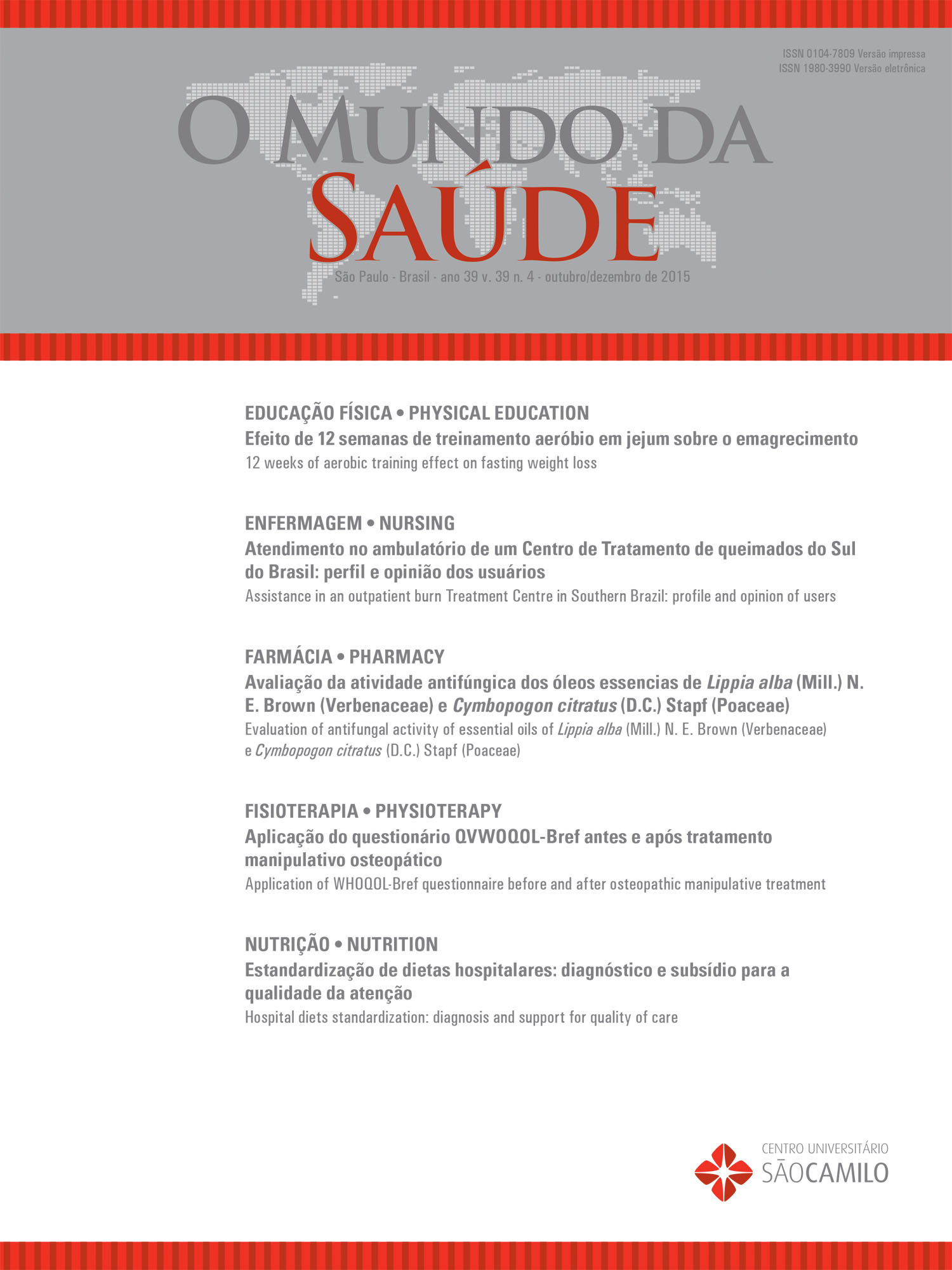Hospital diets standardization: diagnosis and support for quality of care
DOI:
https://doi.org/10.15343/0104-7809.20153904448459Keywords:
Hospital Diets, Standardization, Menu Planning, Portioning, Nutritional ValueAbstract
Standardization directly affects the estimated chemical composition of hospital diets and their acceptance. Consequently,
patient’s or client’s food consumption and fulfillment of their nutritional needs are influenced by this process. Therefore, the
objective of this study was to evaluate the standardization of the production process of diets offered to patients/clients at a
public hospital in Belo Horizonte/MG between the years 2010 to 2012. For this purpose, the direct weighing of six types
of hospital diets that were prepared was made and the menu types and frequencies were characterized. The macronutrient
content and micronutrient content (calcium, iron, sodium, zinc, magnesium, potassium and vitamins A and C) were then
calculated. A high repetition rate was observed regarding the combinations of menu preparations implemented, especially
in relation to diets for special purposes. There were large disparities in the quantitative measurements and nutritional value
of the preparations, in all the diets analyzed, and many of these differences were statistically significant (p<0.05).High coef-
ficients of variation regarding portioning (8-30%), macronutrient content (23-115%) and micronutrient content (24-498%)
were observed in the six types of diet. Therefore, the results highlighted significant weaknesses in planning menus, the food
portions, and hence the nutritional support to their patients / clients by setting up as a non-standard process. The need for
progress with a more humanized initiatives view of this service (individualization of care, nutritional and sensory improve-
ment of menus; organization of the service, and lifelong learning) was highlighted, as the application of gastronomic tech-
niques in planning menus, as well as a continuing education program for the staff of this service, the respective portioning.






























